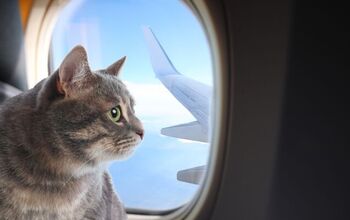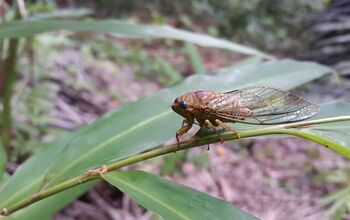Lhasa Apso


About Lhasa Apso
Known for its intelligence, the Lhasa Apso comes with a host of attributes that makes it a wonderful family pet. With its acute senses, keen eyesight and superior instinct, this breed makes for a great watchdog. Not only that, but with its relatively long lifespan, the Lhasa Apso will make an amazing companion that will grow up with your children.
You will soon find that the Lhasa Apso’s main purpose in life is to please you. This breed is independent and is curious about everything around them. Calm and subdued in nature, the Lhasa Apso is a wonderful house pet as it doesn’t require a lot of exercise.
Even though it is small in size, the Lhasa Apso loves to climb. It also likes to hide under tables, a desk, or a chair to make its own den. Resilient and sturdy dogs, you’ll find this breed to be devoted to your family. Read on to learn more about this affectionate breed.
Known for its intelligence, the Lhasa Apso comes with a host of attributes that makes it a wonderful family pet.
Originally from Tibet, the Lhasa Apso is also known as the Tibetan Apso (Apso means goat-like and long hair). Treasured in Tibet, it was only a privileged few that could own them – holy men and nobles. In fact, this breed was used in temples and monasteries as watchdogs. Receiving a Lhasa Apso as a gift was the greatest honor as this breed could never be bought or sold.
It wasn’t until 1901 that the western world was introduced to the western world via England. In 1944, its name was official changed to Lhasa Apso.
The Lhasa Apso first made its appearance in Tibet 4,000 years ago, making it one of the most ancient dog breeds. It was bred from a mountain wolf and was domesticated around 800 BC.
The Lhasa Apso was recognized by the AKC in 1935.
Like with all dog breeds, you should feed your Lhasa Apso a high-quality dog food that can provide the right balance of nutrients.
This breed is independent and is curious about everything around them.
Training your Lhasa Apso can be a rewarding and fun time. Training takes time and patience, so be clam and never be harsh with your dog. Lhasa Apsos are known for having a mind of its own, you’ll need to be extra patient with this strong-willed breed. It’s easier to get your dog to do what you want when you use treats as incentive, and you’ll find that your Lhasa Apso learns quicker this way.
Socialization is important, so start early. Get your Lhasa Apso used to strangers slowly so it doesn’t become overwhelmed. This training will come in handy during visits to the groomer and vets.
As well, you should crate train your Lhasa Apso as soon as possible. This breed loves caves and dens, so it will love its crate. You can get them used to the crate by taking the gate off, which gives them a place to hide without feeling trapped.
Male Lhasa Apsos weigh 14 to 16 pounds, while females weigh 12 to 14 pounds.
Gentle, outgoing and devoted, the Lhasa Apso makes a wonderful pet. Since it’s loving, playful and affectionate, this breed is perfect for families with kids, elderly people or households with other pets. Since the Lhasa Apso likes to be around people, don’t leave it on its own for too long.
You shouldn’t raise your voice to a Lhasa Apso, as it can become depressed. It is a smart breed, which makes it easily training, and it also has a keen sense of hearing, so it knows what’s going on around it. We know it will be hard, but don’t spoil your Lhasa Apso, as it will cause behavioral problems.
The Lhasa Apso travels well and makes a great lap dog. You’ll never be bored around this playful pooch!
The Lhasa Apso is a fairly healthy dog. There are a few issues you may have to deal with. This breed is susceptible to ear infections, which can occur if you don’t take the time to dry them properly after it gets wet, or if it has unnecessary hair in their ears. Keep its long hair away from its face otherwise your Lhasa Apso’s eyes will tear. You may also encounter a skin condition called sebaceous adenitis, which can cause irritations of their skin that lead to Hot Spots or localized skin infections, loss of hair, itching and skin that is flaking. Lhasa Apsos can also develop genetic kidney problems.
Lhasa Apsos have a life expectancy of 12 to 18 years.
Lhasa Apsos have a moderate energy level, so it doesn’t need much exercise. That doesn’t mean your dog should nap all day – you want your pup to stay healthy, trim and fit. Take your Lhasa Apso for walk, let them scamper about and run free to play in the backyard. This breed loves to play fetch and will chase the ball until it gets tired out.
If you don’t have a backyard, don’t worry – your Lhasa Apso can exercise indoors. This breed doesn’t need a lot of space to move around, but your dog will need to get enough exercise every day.
Calm and subdued in nature, the Lhasa Apso is a wonderful house pet as it doesn’t require a lot of exercise.
The American Kennel Club says this about the breed: “The Lhasa Apso is a small, hardy breed with a beautiful cloak of hair that parts down their back from head to tail. Their temperament is unique: joyful and mischievous, dignified and aloof. An independent breed, the Lhasa’s goal in life is not necessarily to please their master. Popular in the show ring, the breed also excels at activities that provide constant challenges, such as agility.”
Lhasa Apsos have long, heavy, and straight coats, also known as a double coat (it has an undercoat and a top coat). Its coat doesn’t shed, which makes this a good breed for people with allergies or asthma. You will have to brush your Lhasa Apso’s coat bi-weekly because its coat can easily become matted or tangled
After your puppy is fully vaccinated, you need to socialize your Lhasa Apso. Take your puppy to different places where it can experience different sounds, smells and sights – this will make your dog more at ease in unfamiliar situations.
Photo credit: Eric Isselee/Shutterstock

Amy Tokic, Editor of PetGuide.com, is a passionate animal lover and proud pet parent of Oscar, a Shih Tzu/Chihuahua cross, and Zed, a Japanese Chin. Her love of animals began in kindergarten, when she brought her stuffed dog Snoopy into class with her every day. Now, she writes about her adventures in pet ownership and tirelessly researches products, news and health related issues she can share with other animal enthusiasts. In her free time, Amy loves perusing used book and record stores, obsessing over the latest pet products available and chasing squirrels with wild abandon (a habit attributed to spending too much time with her pooches).
More by Amy Tokic

























